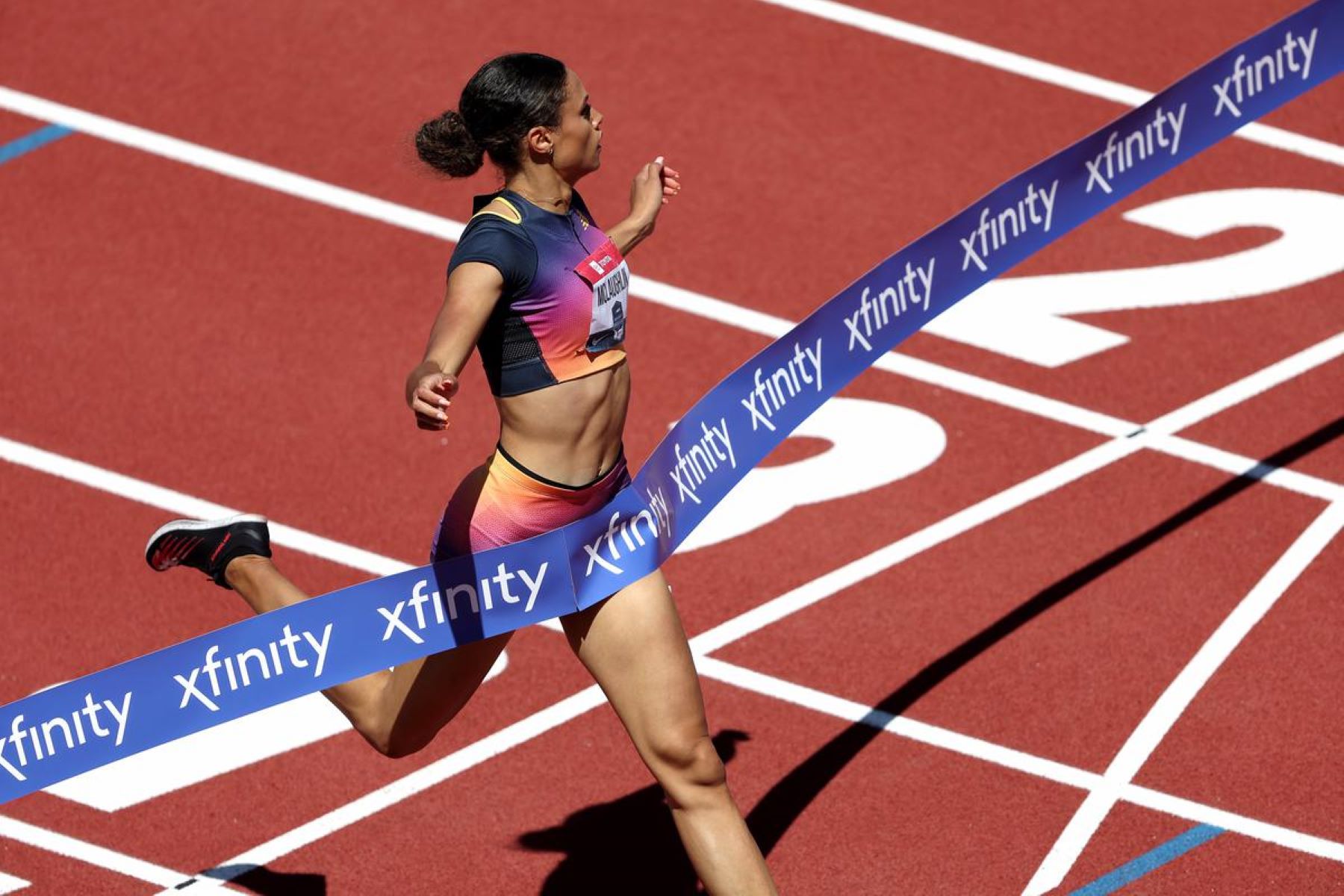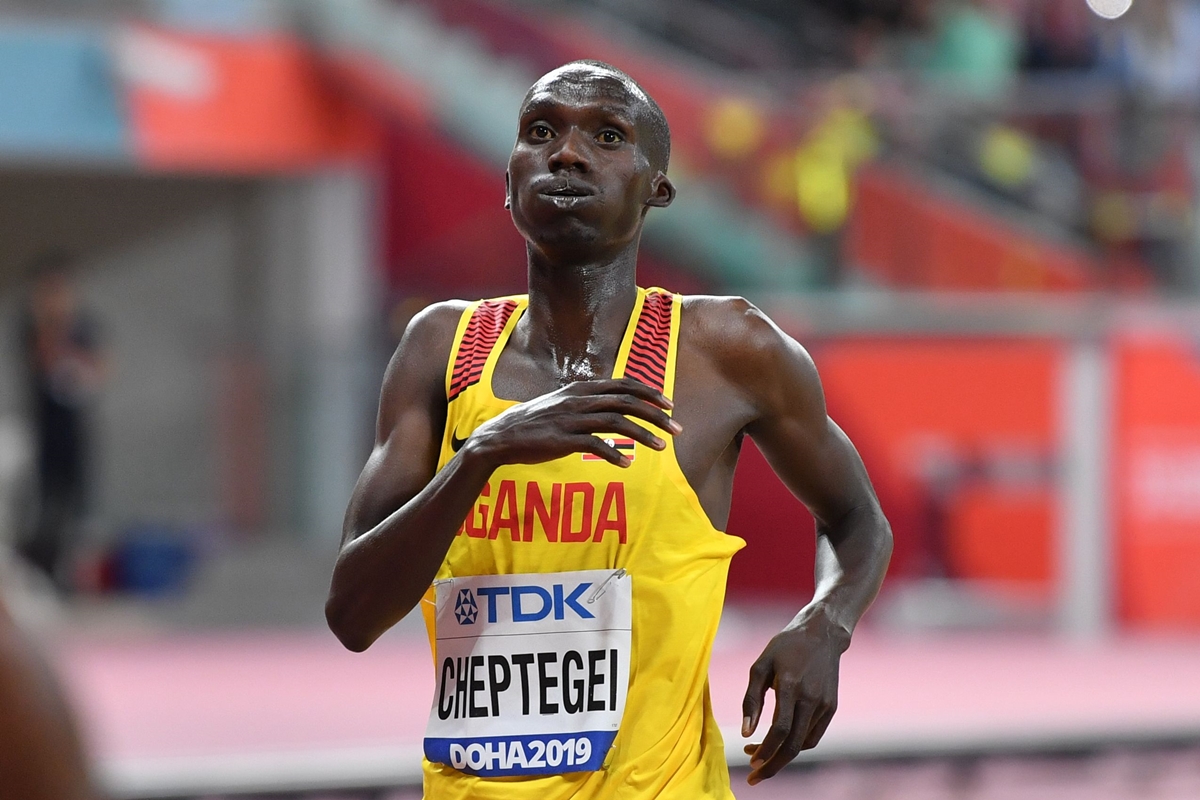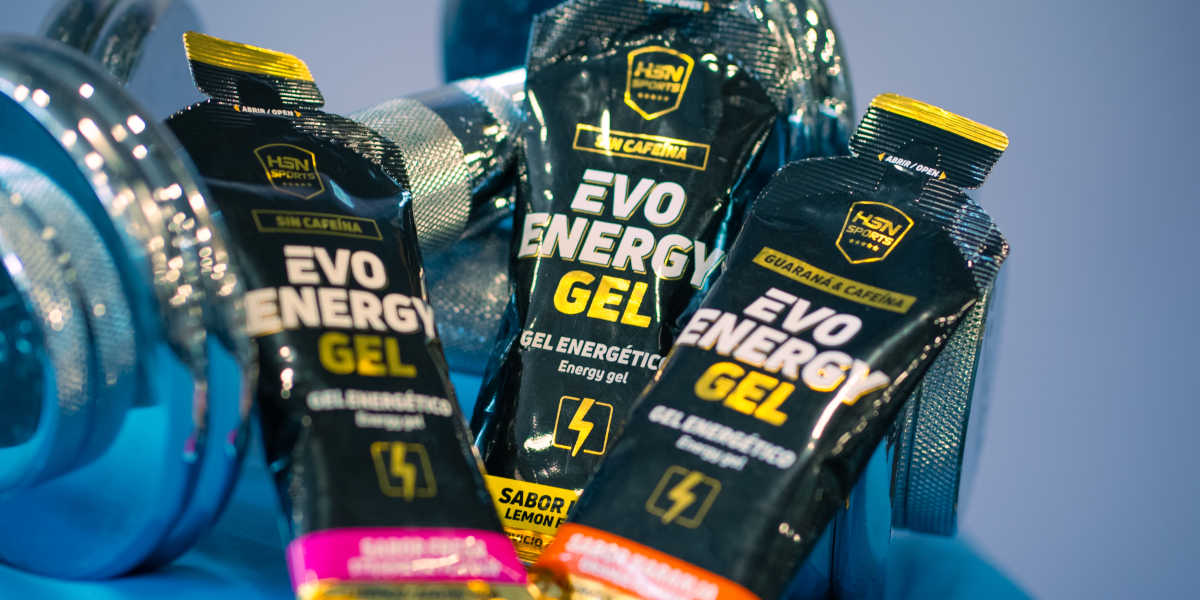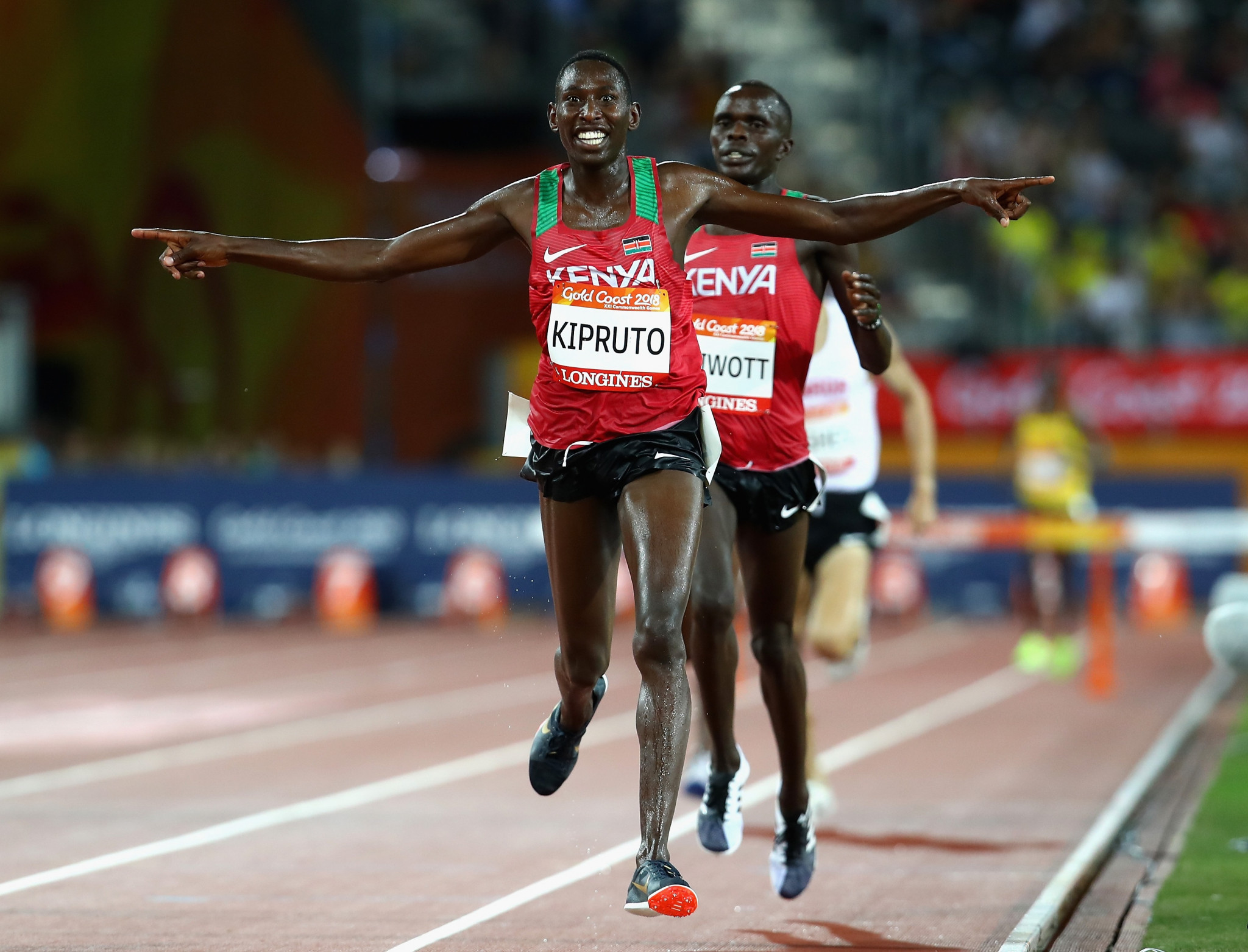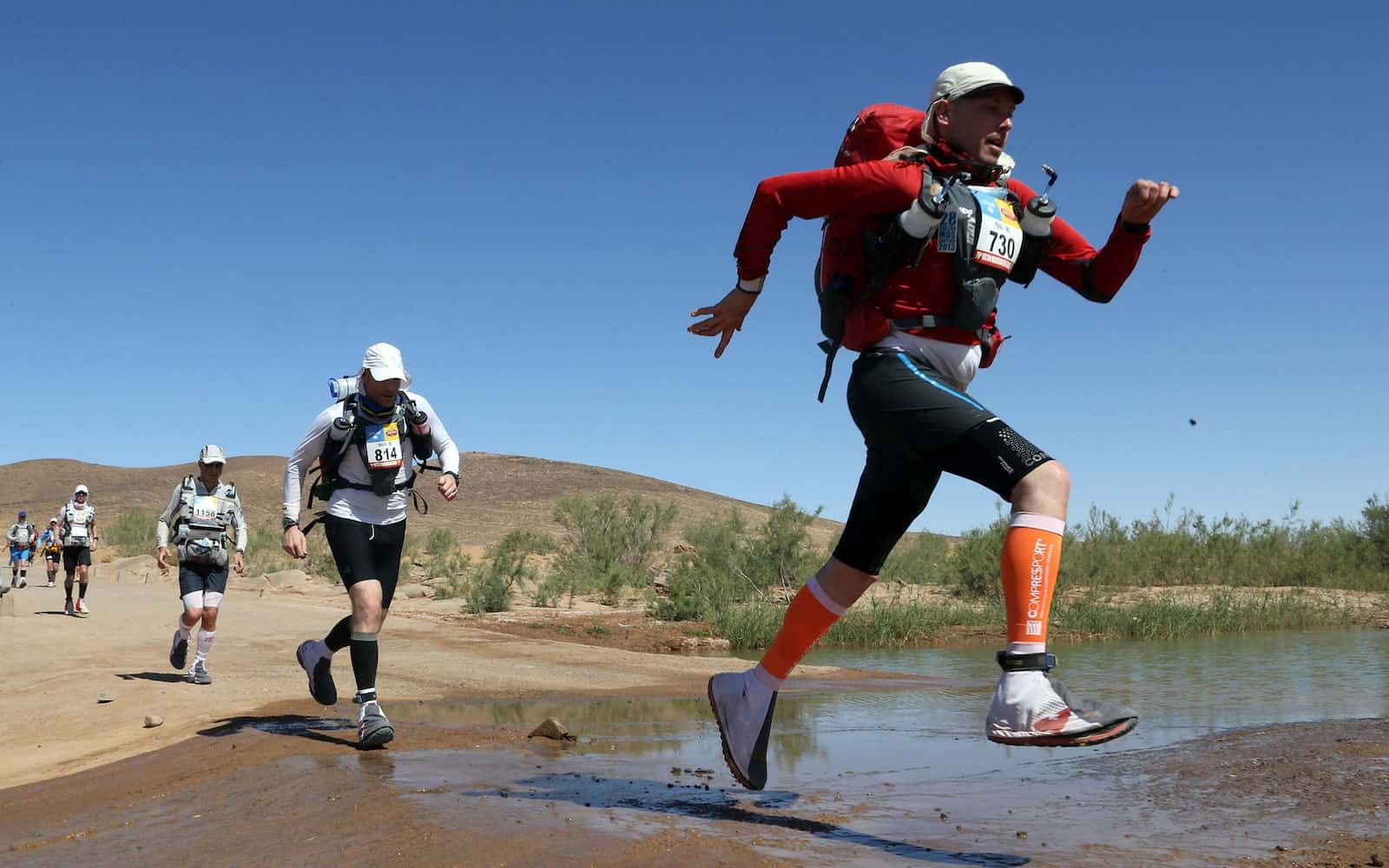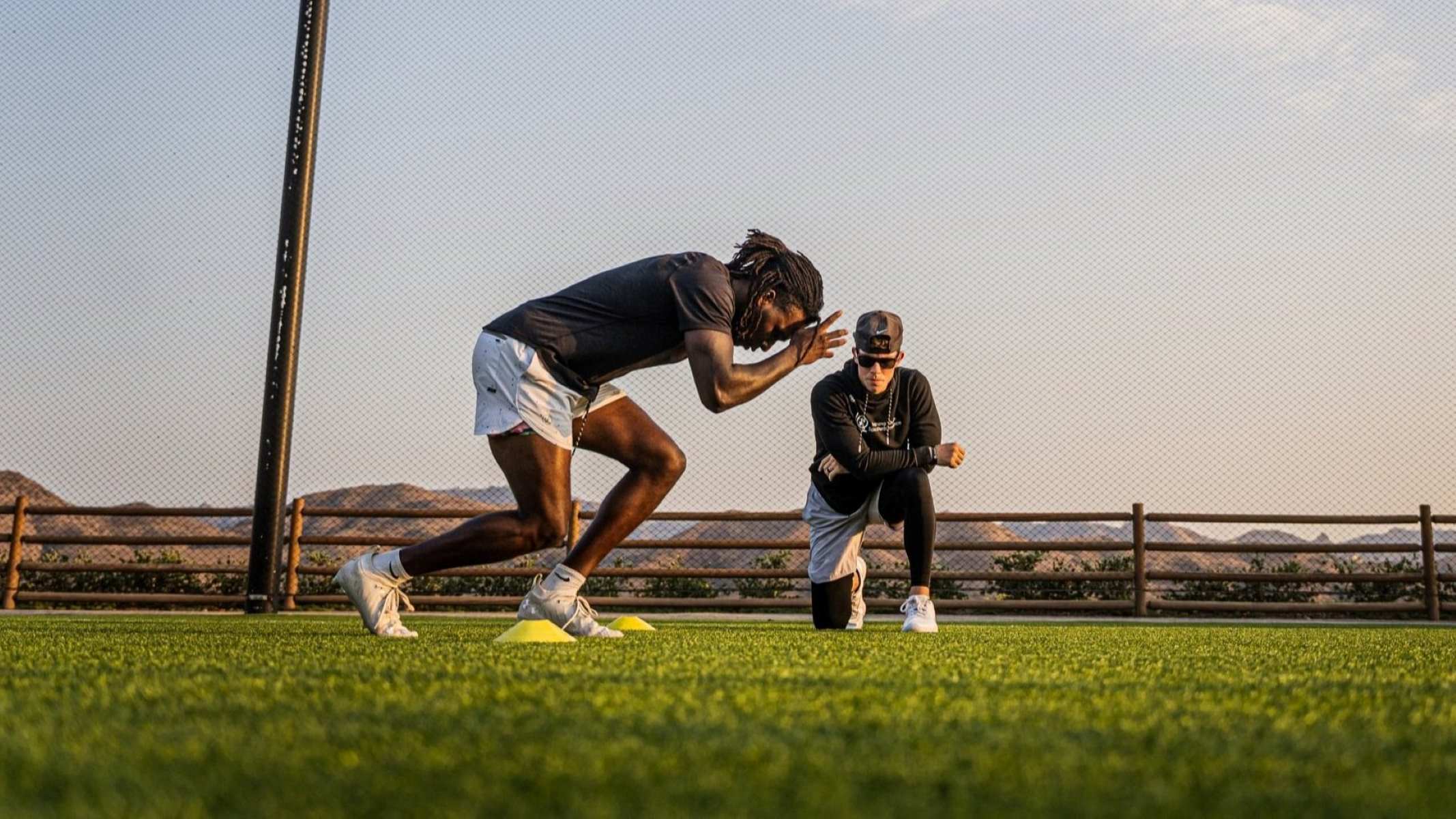

Featured
What Are Athletic Performance Factors
Modified: January 2, 2024
Learn the key factors that contribute to athletic performance and discover how to improve them. Featured tips and strategies to enhance your athletic abilities.
Introduction
Athletic performance is a complex interplay of various factors that contribute to an individual’s ability to excel in sports and physical activities. These factors encompass a wide range of elements, including genetics, physical fitness, training programs, nutrition, rest, psychological factors, environmental conditions, and equipment. Understanding how each of these factors impacts athletic performance is crucial for athletes, coaches, and fitness enthusiasts seeking to optimize their abilities.
Genetic factors play a fundamental role in athletic performance. One’s genetic makeup determines their body composition, muscle fiber type, and aerobic capacity, among other traits. These genetic predispositions can impact an individual’s potential for strength, speed, endurance, and agility. While genetics provide a foundation, it’s important to note that athletic performance is not solely determined by genetics, as environmental and lifestyle factors also play a significant role.
Physical fitness level is another critical factor in athletic performance. It encompasses elements such as cardiovascular endurance, muscular strength, flexibility, and agility. Having a well-rounded fitness level is essential for performing at a high level in various sports. Improving these fitness components through regular exercise and training can greatly enhance an individual’s athletic performance.
Training and exercise programs tailored to specific sports or activities are vital in optimizing athletic performance. These programs focus on developing sport-specific skills, improving strength and power, enhancing endurance, and refining agility and coordination. The type, intensity, and duration of training can significantly impact an athlete’s performance. The incorporation of periodization, which involves structured phases of training and recovery, helps to prevent overtraining and optimize performance gains.
Nutrition and hydration are crucial elements that affect athletic performance. The fuel an individual provides their body significantly impacts energy levels, endurance, and recovery. Proper nutrition involves consuming a balanced diet with adequate carbohydrates, proteins, fats, vitamins, and minerals. Hydration is equally important, as even mild dehydration can impair performance. Adequate water intake and replenishment of electrolytes are essential for optimal performance.
Rest and recovery are often underestimated factors in athletic performance. While training is necessary to improve performance, allowing the body time to rest and recover is equally important. Adequate sleep, rest days, and active recovery strategies help the body repair and adapt to the stress of training, leading to improved performance and reduced risk of injury.
Genetic Factors
Genetic factors play a significant role in athletic performance. Each person has a unique genetic makeup that influences their physical attributes and abilities. These genetic predispositions can impact an individual’s potential for strength, speed, endurance, and agility.
One of the genetic factors that influence athletic performance is body composition. Some people may naturally have a higher percentage of muscle mass or lower body fat, which can give them an advantage in certain sports that require strength or speed. Additionally, individuals may have a genetic disposition for specific muscle fiber types, such as fast-twitch or slow-twitch fibers. Fast-twitch fibers are associated with explosive power and speed, while slow-twitch fibers are more efficient for endurance activities.
Aerobic capacity, or the body’s ability to use oxygen during exercise, is another genetic factor that can impact athletic performance. This trait is determined by factors such as the size of the heart and lungs, the efficiency of oxygen transport, and the composition of muscle fibers. Individuals with a higher aerobic capacity have an advantage in endurance sports such as long-distance running or cycling.
It is important to note that genetic factors do not guarantee athletic success. While some individuals may have genetic advantages in certain areas, it does not discount the importance of training, discipline, and hard work. Genetic potential can provide a foundation, but it is the combination of genetics and training that ultimately determines an athlete’s performance.
Genetic testing has gained popularity in recent years, with some athletes using it to gain insights into their genetic makeup and potential strengths. This information can help athletes tailor their training programs, focus on areas of genetic advantage, and mitigate potential weaknesses. However, it is crucial to approach genetic testing with caution and work with trained professionals to interpret the results accurately.
While genetic factors can influence athletic performance, it is essential to remember that they are not the sole determinants. Environmental factors, such as training, nutrition, and psychological factors, also play a significant role. Additionally, athletes can maximize their potential by focusing on factors within their control, such as improving physical fitness, following proper training programs, and maintaining a healthy lifestyle.
Physical Fitness Level
The physical fitness level of an individual is a crucial factor in determining their athletic performance. Physical fitness encompasses various components, including cardiovascular endurance, muscular strength and endurance, flexibility, and agility.
Cardiovascular endurance refers to the ability of the heart and lungs to deliver oxygen to the working muscles during prolonged exercise. It is an essential component for sports and activities that require sustained aerobic effort, such as long-distance running, cycling, or swimming. Regular cardiovascular exercise, such as jogging, cycling, or using aerobic machines, improves endurance capacity and enhances overall athletic performance.
Muscular strength and endurance play a vital role in many sports and physical activities. Muscular strength refers to the maximal force a muscle or group of muscles can generate, while muscular endurance refers to the ability to sustain contractions over an extended period. Building muscular strength and endurance through resistance training exercises, such as weightlifting or bodyweight exercises, can improve performance in activities that require strength, such as weightlifting or sprinting.
Flexibility is another crucial component of physical fitness that impacts athletic performance. It refers to the range of motion around a joint and the ability to move muscles and connective tissues effectively. Adequate flexibility allows athletes to perform movements with greater efficiency and reduce the risk of injury. Incorporating regular stretching exercises and practices such as yoga or Pilates helps to improve flexibility and enhance overall athletic performance.
Agility is the ability to change direction quickly and maintain balance while moving. It is crucial in sports that require rapid changes in speed, direction, and body positioning, such as basketball, soccer, or tennis. Agility can be improved through specific drills and exercises that focus on dynamic movements, coordination, and reaction time.
Improving physical fitness level requires a well-rounded exercise program that includes cardiovascular training, strength training, flexibility exercises, and agility drills. It is essential to incorporate both aerobic and anaerobic activities to develop a balanced fitness level. Additionally, proper technique, progression, and consistency are key to achieving optimal results and reducing the risk of injury.
Regular assessments of physical fitness, such as fitness tests or body composition analysis, can help individuals track their progress and identify areas for improvement. Working with a fitness professional or a coach can provide guidance and personalized exercise programs tailored to individual needs and goals.
Training and Exercise Programs
Training and exercise programs are essential in optimizing athletic performance. These programs are designed to improve specific skills, enhance strength and power, increase endurance, refine agility and coordination, and prevent injuries. Tailoring training programs to specific sports or activities is crucial to ensuring athletes perform at their highest level.
One important aspect of training programs is sport-specific skill development. This involves practicing the specific movements, techniques, and strategies required in a particular sport. For example, a basketball player may focus on dribbling, shooting, and defensive maneuvers, while a swimmer may work on stroke efficiency and turn techniques. Sport-specific training helps athletes hone their skills and improve performance in their chosen activity.
Strength and power training are vital for athletes in various sports, including weightlifting, sprinting, and jumping events. These exercises aim to increase muscular strength, power output, and explosiveness. Weightlifting, resistance training, and plyometric exercises are commonly used to improve strength and power. By increasing muscle strength and power, athletes can generate greater force and perform at a higher level in their respective sports.
Endurance training is crucial for athletes participating in endurance-based activities such as long-distance running, cycling, or swimming. Endurance exercises, such as steady-state aerobic training or interval training, help improve cardiovascular fitness, increase the body’s capacity to use oxygen, and delay the onset of fatigue. Endurance training programs typically include a combination of long, slow-distance workouts and shorter, high-intensity intervals to improve both aerobic and anaerobic endurance.
Agility and coordination are essential for athletes participating in sports that require quick direction changes, precision, and balance. Agility drills, such as ladder drills, cone drills, and shuttle runs, help athletes improve their ability to change directions rapidly, maintain balance, and react quickly to stimuli. Coordination exercises, such as agility ladder drills or balance exercises, enhance the neuromuscular connection and improve overall body control.
Periodization is a common approach used in training programs to optimize performance and prevent overtraining. It involves dividing the training year into distinct phases, with each phase focusing on specific goals. These phases typically include an off-season phase for rest and recovery, a pre-season phase for building a base level of fitness and addressing weaknesses, an in-season phase for maintaining performance, and a post-season phase for recovery and evaluation. Periodization ensures athletes peak at the right time and prevents burnout or injury from excessive training.
Working with a qualified and experienced coach or trainer is crucial when developing training and exercise programs. These professionals can assess an individual’s fitness level, identify strengths and weaknesses, and design a tailored program to meet specific goals. They can also monitor progress, provide guidance on proper technique, and make adjustments to the program as needed.
Nutrition and Hydration
Nutrition and hydration are crucial factors that significantly impact athletic performance. Providing the body with the proper fuel and fluids is essential for maintaining energy levels, enhancing endurance, promoting recovery, and reducing the risk of injury.
Proper nutrition involves consuming a well-balanced diet that provides the necessary macronutrients (carbohydrates, proteins, and fats) and micronutrients (vitamins and minerals) to support an athlete’s training and performance. Carbohydrates are the main source of fuel for muscles and should make up a significant portion of an athlete’s diet. Complex carbohydrates, such as whole grains, fruits, and vegetables, provide sustained energy. Proteins are vital for muscle repair and growth and can be obtained from lean meats, poultry, fish, beans, and dairy products. Fats are another energy source and should come from healthy sources such as nuts, seeds, avocados, and oils.
Hydration is equally important as even mild dehydration can impair an athlete’s performance. Maintaining adequate fluid balance helps regulate body temperature, transport nutrients, and remove waste products. The amount of fluid needed varies depending on factors such as the duration and intensity of exercise, climate, and individual sweat rate. It is recommended to drink fluids regularly throughout the day and hydrate before, during, and after exercise. Water is usually sufficient for most activities, but for prolonged or intense exercise, sports drinks containing electrolytes may be beneficial.
Timing and composition of meals and snacks are critical for optimizing performance and recovery. Pre-exercise meals should be consumed 2-3 hours before a workout and should consist of easily digestible foods that provide carbohydrates for energy and protein for muscle repair. During exercise, consuming small, easily digestible snacks or sports drinks can help maintain energy levels. Post-exercise nutrition is crucial for replenishing glycogen stores, repairing muscle damage, and promoting recovery. Consuming a combination of carbohydrates and proteins within 30-60 minutes after exercise can help facilitate recovery and enhance muscle synthesis.
In addition to macronutrients, athletes may benefit from certain supplements to support their nutritional needs. However, it is essential to consult with a sports dietitian or healthcare professional before taking any supplements to ensure their safety, efficacy, and legality.
Proper nutrition and hydration strategies should be individualized based on an athlete’s specific needs, goals, and training program. Consulting with a sports dietitian or nutritionist can provide personalized guidance on meal planning, supplementation, and strategies to optimize nutrition for athletic performance.
Rest and Recovery
Rest and recovery are often overlooked factors in athletic performance, but they are essential for optimizing performance, reducing the risk of injuries, and promoting overall well-being. While training is necessary to improve performance, allowing the body time to rest and recover is equally important.
Adequate sleep is one of the most crucial aspects of rest and recovery. Sleep provides the body with time to repair tissues, consolidate memories, and regulate hormonal balance. The optimal amount of sleep varies depending on individual needs, but most athletes require between 7-9 hours of quality sleep each night. Establishing a consistent sleep routine, creating a conducive sleep environment, and prioritizing sleep hygiene practices such as avoiding electronic devices before bed can help athletes optimize their sleep quality and duration.
Rest days are also important in a training program as they allow the body to recover and adapt to the stress of exercise. These rest days can be active recovery days, where athletes engage in low-intensity activities such as gentle stretching, light swimming, or yoga. Active recovery promotes blood flow, helps flush out metabolic waste, and aids in muscle repair. Additionally, incorporating periodic deload weeks, where training volume and intensity are reduced, can provide the body with a more extended period of rest and recovery to prevent overtraining and optimize performance gains.
Utilizing various recovery strategies can help athletes enhance their overall recovery process. Examples of effective recovery techniques include foam rolling, massage therapy, contrast water therapy (alternating between hot and cold showers or baths), and using compression garments. These strategies can help reduce muscle soreness, improve circulation, and promote tissue repair. Additionally, incorporating stress management techniques such as meditation, deep breathing exercises, or mindfulness practices can aid in relaxation and reduce the impact of psychological stress on the body.
Proper nutrition and hydration also play a role in rest and recovery. Consuming foods and fluids that provide the necessary nutrients for tissue repair, glycogen replenishment, and hydration is crucial during the recovery period. Adequate protein intake is especially important to support muscle synthesis and repair. Additionally, staying hydrated helps facilitate the removal of metabolic waste products and supports optimal cellular functions.
Understanding the signs of overtraining and listening to the body’s signals is crucial for preventing burnout and injury. Common signs of overtraining include persistent fatigue, poor performance, frequent illness or injury, mood disturbances, and changes in appetite or sleep patterns. If these signs are present, it may be necessary to adjust the training program, incorporate more rest days, or seek the guidance of a coach or healthcare professional.
Rest and recovery are integral parts of a well-rounded training program. Athletes who prioritize rest and recovery can optimize their performance, prevent injuries, and maintain long-term physical and mental well-being. By incorporating adequate sleep, rest days, active recovery strategies, and stress management techniques, athletes can achieve a balance between training and recovery, leading to improved athletic performance and overall health.
Psychological Factors
Psychological factors play a significant role in athletic performance. The mental aspect of sports and physical activities can greatly impact an individual’s ability to perform at their best. Developing and maintaining a strong mindset is crucial for achieving peak performance and overcoming challenges.
One important psychological factor is motivation. Athletes who are intrinsically motivated, meaning they are driven by internal factors such as enjoyment and personal satisfaction, tend to have higher levels of commitment and perseverance. Extrinsic motivation, such as external rewards or recognition, can also be effective in driving performance. Finding and harnessing the right motivation can provide athletes with the determination and resilience needed to push through challenging training sessions and competitions.
Confidence is another critical psychological factor that influences athletic performance. Athletes who have belief in their abilities and skills are more likely to take risks, perform under pressure, and bounce back from setbacks. Building confidence can be achieved through consistent training, setting achievable goals, positive self-talk, visualizations, and celebrating successes, no matter how small they may be.
Focus and concentration are essential for athletes to perform at their best. Being able to shut out distractions and maintain attention on the task at hand can improve decision-making, reaction times, and overall performance. Techniques such as mindfulness, meditation, and visualization can help athletes develop mental clarity and enhance their ability to focus.
Managing stress and anxiety is crucial for athletic performance. The pressure to succeed, perform under scrutiny, and meet high expectations can lead to increased levels of stress and anxiety. Learning effective coping strategies, such as deep breathing exercises, positive self-talk, and focusing on the present moment, can help athletes manage their stress and anxiety levels. Seeking support from coaches, sports psychologists, or support networks can also be beneficial.
Mental toughness is the ability to maintain focus, motivation, and determination despite adversity or setbacks. It involves the resilience to bounce back from failures, handle pressure situations, and stay composed under challenging circumstances. Developing mental toughness can be achieved through conditioning techniques, exposure to challenging situations in training, and developing a growth mindset that sees obstacles as opportunities for growth.
Team dynamics and interpersonal relationships can also impact an athlete’s psychological state and performance. A positive team environment, effective communication, and a supportive network of coaches, teammates, and mentors can enhance an athlete’s motivation, confidence, and overall well-being. Building strong relationships and fostering a sense of belonging within the team can contribute to a positive psychological climate.
Psychological factors should not be overlooked when it comes to athletic performance. Athletes who prioritize their mental well-being and develop psychological strategies to enhance their performance can gain a competitive edge. Cultivating motivation, confidence, focus, stress management techniques, and mental toughness can help athletes reach their full potential and excel in their chosen sports or physical activities.
Environmental Conditions
Environmental conditions play a significant role in athletic performance. Factors such as temperature, humidity, altitude, and weather conditions can have both positive and negative impacts on an athlete’s ability to perform at their best. Understanding and adapting to these environmental conditions is crucial for optimizing performance and ensuring the well-being of athletes.
Temperature and humidity levels can greatly affect performance, especially in endurance sports. High temperatures and humidity can increase the rate of sweat production, leading to dehydration and electrolyte imbalances. Heat stress can also impair the body’s ability to cool down, leading to decreased performance and an increased risk of heat-related illnesses. Similarly, cold temperatures can affect muscle function and decrease flexibility. Proper hydration, acclimatization, and appropriate clothing choices are essential for athletes to adapt to varying temperature and humidity conditions.
Altitude, or the elevation above sea level, can significantly impact athletic performance. At higher elevations, the air pressure and oxygen concentration decrease, leading to lower oxygen availability. This can result in decreased aerobic capacity and increased fatigue, especially for athletes who are not accustomed to high altitudes. Training at altitude or using altitude training techniques, such as hypoxic chambers or altitude simulators, can help athletes acclimatize and improve their performance at higher altitudes.
Weather conditions, such as wind, rain, or snow, can also affect performance in outdoor sports. Strong winds can impact speed and accuracy, while rain or snow can affect traction and visibility. Adaptability and the ability to adjust strategies and techniques based on weather conditions are essential for athletes participating in outdoor sports. Proper equipment, such as appropriate footwear or rain gear, can also help athletes perform optimally in challenging weather conditions.
The playing surface or field conditions can also impact athletic performance. Hard or uneven surfaces can increase the risk of injuries, especially in contact sports or sports that involve jumping or rapid directional changes. Proper footwear and protective gear are important to reduce the risk of injuries and provide stability and support on different playing surfaces.
Environmental conditions can be unpredictable, and athletes should be prepared to adapt to changing circumstances. Sports teams and event organizers often take measures to ensure the safety and well-being of participants. Monitoring weather forecasts, adjusting training schedules, and following guidelines and recommendations from coaches and event officials are crucial for managing environmental conditions effectively.
Understanding the impact of environmental conditions on athletic performance and taking appropriate measures to adapt can help athletes perform at their best and reduce the risk of injuries and illnesses. Prioritizing safety, staying hydrated, adjusting strategies, and being flexible in training and competition can all contribute to optimal performance in variable environmental conditions.
Equipment and Gear
Equipment and gear are essential components of athletic performance. The right equipment can enhance performance, provide safety, and contribute to an athlete’s overall comfort and confidence. Choosing and utilizing appropriate equipment and gear for specific sports or activities is crucial for optimal performance.
In many sports, having the right footwear is paramount. Proper athletic shoes that provide support, cushioning, and traction for specific movements and playing surfaces can significantly impact performance and reduce the risk of injuries. Athletes should select shoes that are designed for their specific sport and ensure they are the correct size and fit.
Protective gear is crucial for athletes participating in contact sports or activities with a higher risk of injury. Equipment such as helmets, mouthguards, shin guards, pads, or goggles help protect vulnerable areas of the body and reduce the risk of serious injuries. It is important to ensure that protective gear fits properly, is in good condition, and is worn consistently during training and competition.
Sports-specific equipment is essential for athletes to perform at their best. This may include items such as racquets, balls, bats, sticks, or specialized gear for sports like skiing, snowboarding, or cycling. Using equipment that is appropriate for the specific sport or activity helps athletes optimize their performance and ensure safety.
Technical gear and apparel can also impact an athlete’s performance. Clothing that is designed for the specific sport or activity can provide comfort, breathability, and flexibility, enabling athletes to move freely and stay focused. Moisture-wicking fabrics help regulate body temperature and manage sweat, while compression garments can aid in muscle support and recovery.
Technological advancements have led to the development of sports equipment and gear with advanced features. For example, in sports such as swimming or cycling, technical advancements in swimsuits and aerodynamic bikes have significantly improved performance. It is essential to stay up to date with the latest advancements and consider how incorporating new technologies or equipment may contribute to improving performance.
Regular maintenance and proper care of equipment and gear are also crucial. This includes checking for wear and tear, cleaning, and following manufacturer guidelines for maintenance and replacement. Ensuring that equipment is in good condition and functioning properly is vital for safety and performance.
Lastly, athletes should take the time to test and familiarize themselves with new equipment and gear before competition or important events. This allows for adjustments, modifications, and becoming comfortable with the equipment prior to performing at a high level.
Choosing the right equipment and gear is a personal and individualized process. Consulting with coaches, trainers, and specialists, and seeking expert advice can help athletes select the equipment and gear that best suits their needs, enhances their performance, and ensures their safety.

